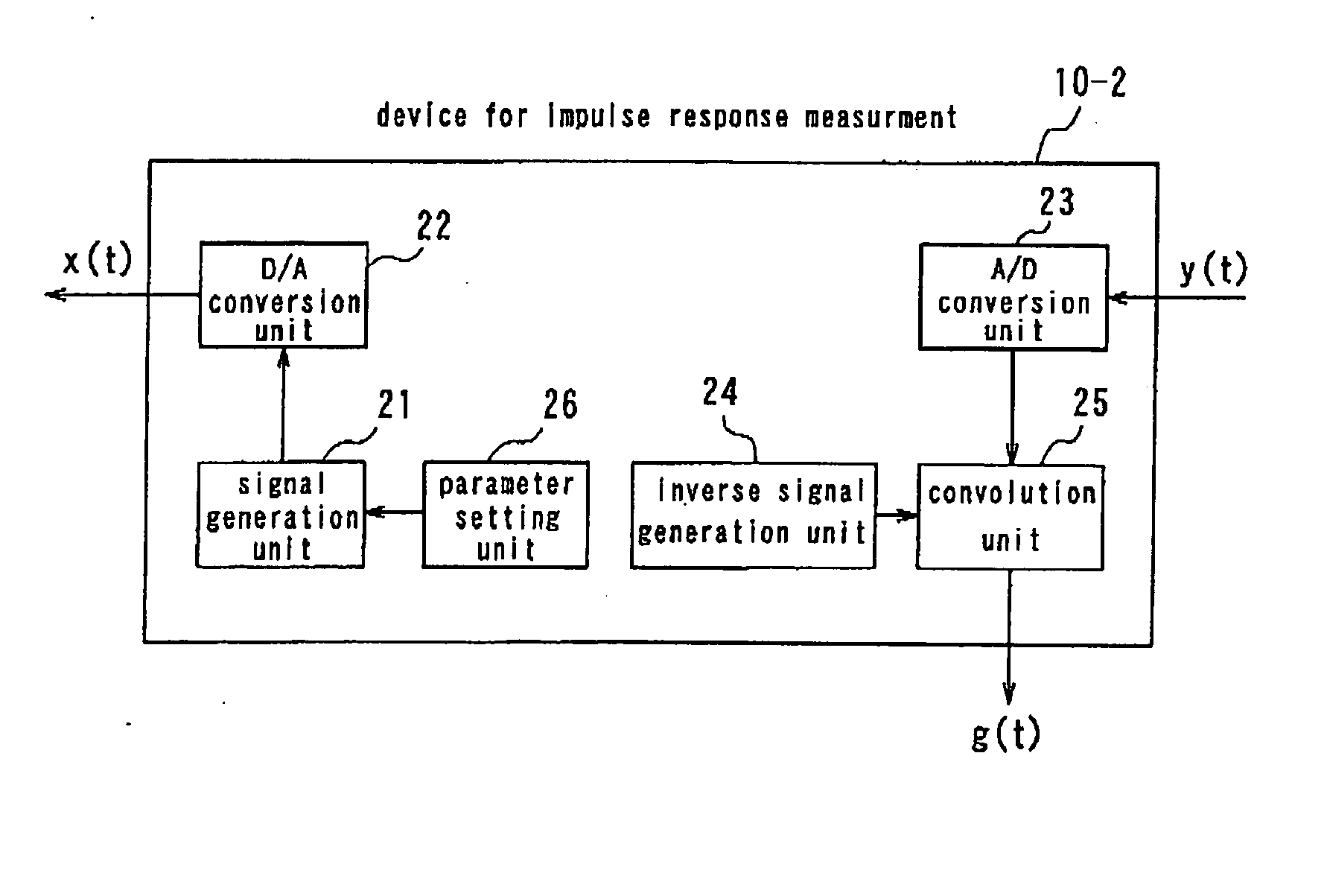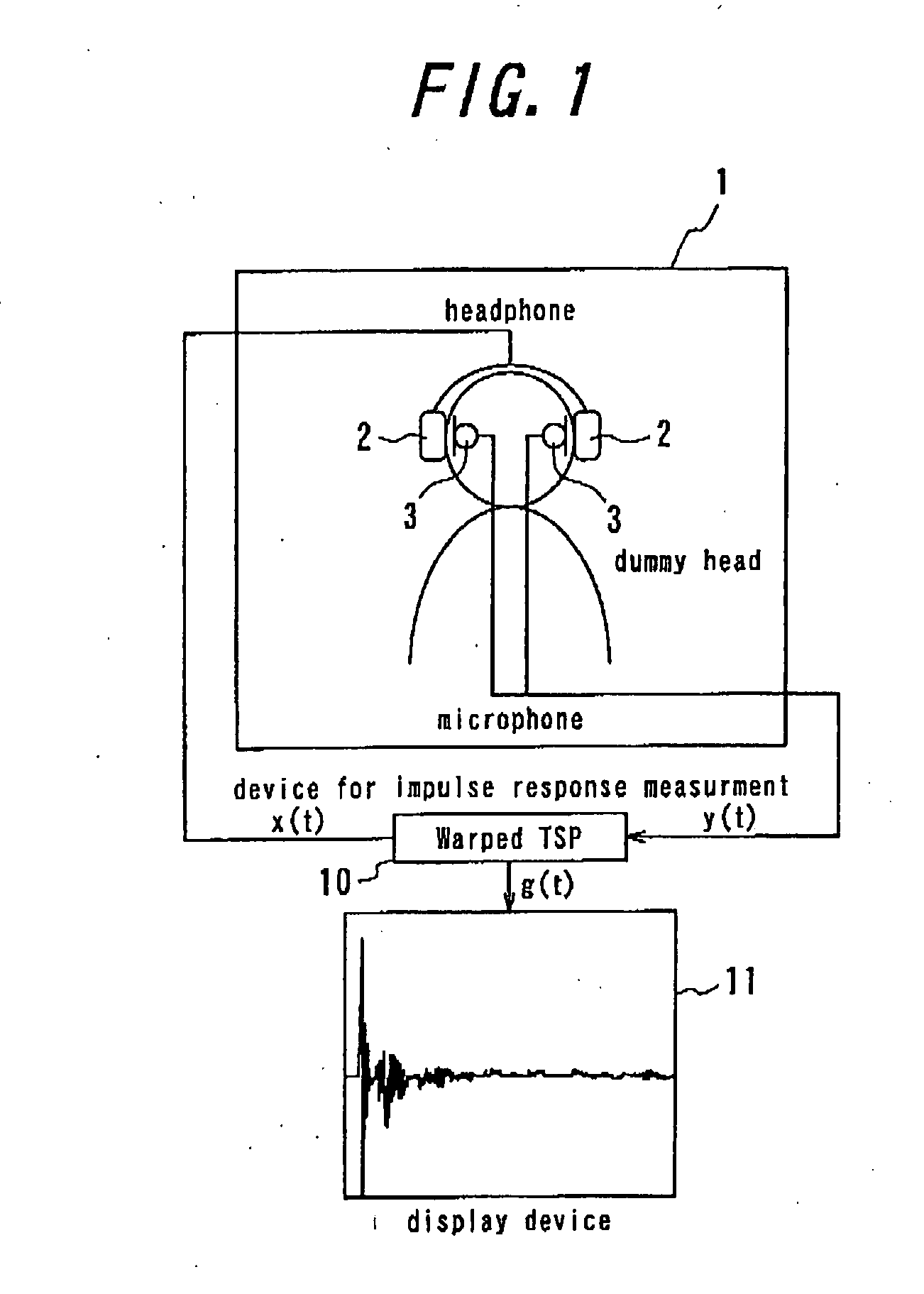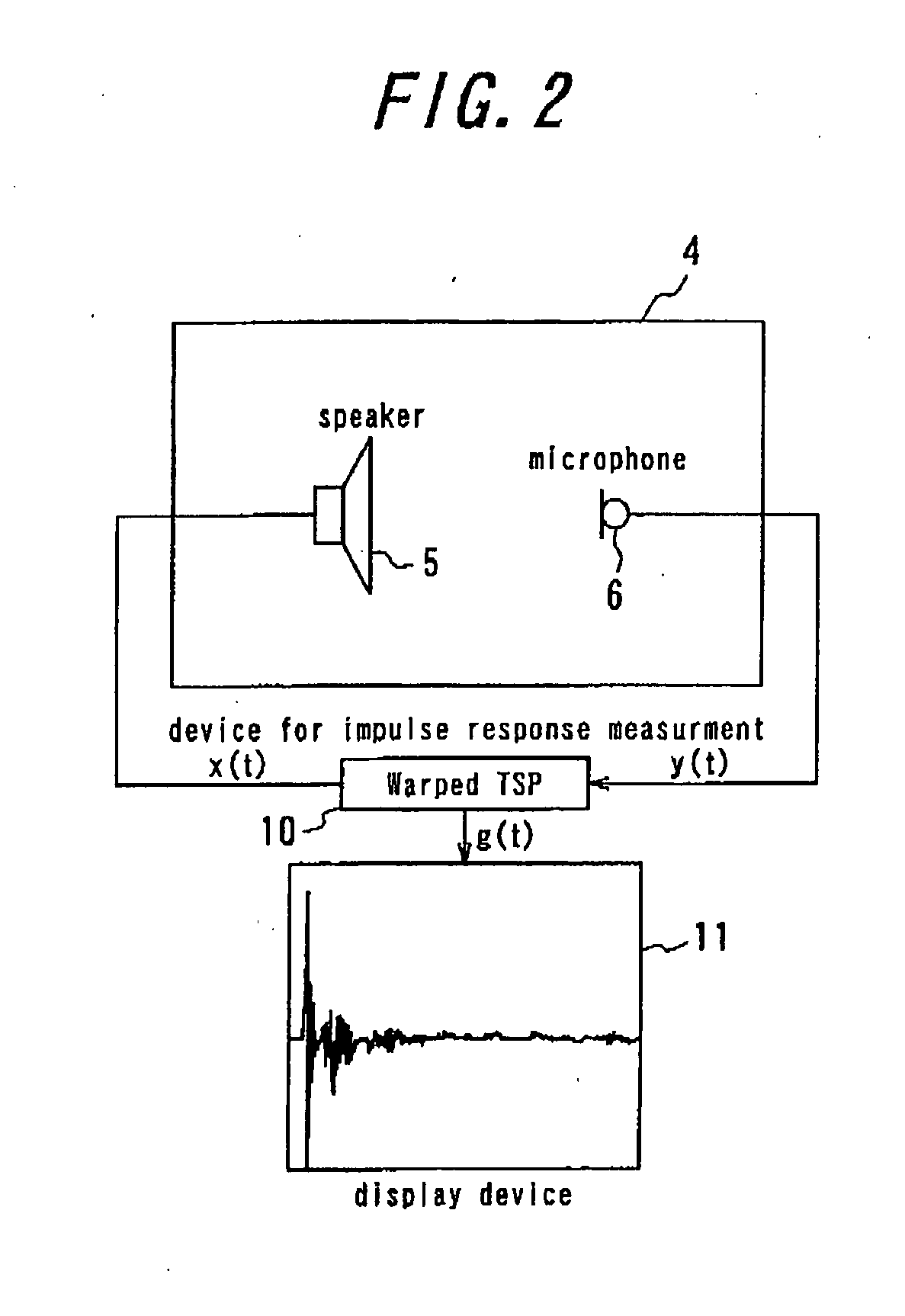Impulse Response Measurement Method and Device
a technology of impulse response and measurement method, which is applied in the direction of measurement device, instrument, electrical apparatus, etc., can solve the problems of insufficient energy in the higher frequency band relative to the lower frequency band of the tsp method, and achieve the effects of reducing the s/n ratio, improving the accuracy of measurement, and being well-balanced
- Summary
- Abstract
- Description
- Claims
- Application Information
AI Technical Summary
Benefits of technology
Problems solved by technology
Method used
Image
Examples
first embodiment
[0040] The device for impulse response measurement 10 shown in FIGS. 1 and 2 will be described next in detail. FIG. 3 is a block diagram showing the device for impulse response measurement 10. This device for impulse response measurement 10-1 comprises a signal generation unit 21 for generating a W-TSP signal x(t), a D / A conversion unit 22 for converting the W-TSP signal into an analog signal, an A / D conversion unit 23 for converting the signal y(t) into a digital signal, an inverse signal generation unit 24 for generating an inverse W-TSP signal x−1(t) and a convolution unit 25 for calculating an impulse response g(t) by convoluting the signal y(t) mentioned above and the inverse W-TSP signal x−1(t).
[0041] The operations will next be explained. After the beginning of an impulse response measurement, the signal generation unit 21 of the device for impulse response measurement 10-1 generates a W-TSP signal x(t) that can be obtained by transforming onto the time axis an H(k) satisfyin...
second embodiment
[0042] the device for impulse response measurement will be described with reference to FIG. 4. The device for impulse response measurement 10-2 comprises a parameter setting unit 26 as well as a signal generation unit 21 shown in FIG. 3, a D / A conversion unit 22, an A / D conversion unit 23, an inverse signal generation unit 24 and a convolution unit 25. In FIG. 4, equivalent components are referred to with the same symbols as in FIG. 3, description in detail thereof being omitted.
[0043] The parameter setting unit 26 sets a parameter n (=1, . . . , N / 2) that determines characteristics of the W-TSP signal x(t) and outputs the parameter to the signal generation unit 21. The signal generation unit 21 generates a W-TSP signal x(t) with the use of the parameter n having been set by the parameter setting unit 26. Herein the parameter n may be a number within the range of 1 to N / 2. Referring to formulas (3) to (5), if the parameter n is close to 1, the signal generation unit 21 generates a W...
PUM
 Login to View More
Login to View More Abstract
Description
Claims
Application Information
 Login to View More
Login to View More - R&D
- Intellectual Property
- Life Sciences
- Materials
- Tech Scout
- Unparalleled Data Quality
- Higher Quality Content
- 60% Fewer Hallucinations
Browse by: Latest US Patents, China's latest patents, Technical Efficacy Thesaurus, Application Domain, Technology Topic, Popular Technical Reports.
© 2025 PatSnap. All rights reserved.Legal|Privacy policy|Modern Slavery Act Transparency Statement|Sitemap|About US| Contact US: help@patsnap.com



